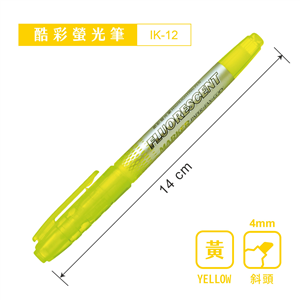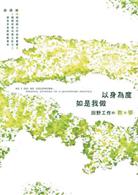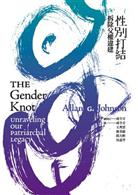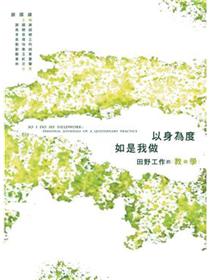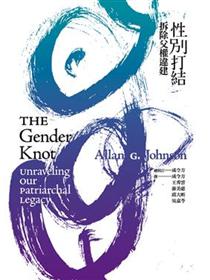名人推薦:
推薦序之一
《我也繪漢字》乃是由本校陳學志教授與林振興教授兩位教育心理及華語文教學專家共同編撰。陳學志教授為本校「華語文與科技研究中心」主任兼「教育心理與輔導學系」系主任;林振興教授則是本校「應用華語文學系」的系主任。兩位的合作是為了解決華語文學習上漢字的辨認與書寫之難題。他們研發出「鍵接圖」(Key-image Pictures)記憶策略,其特點在於運用一個圖像可同時引發學習者聯想漢字的字形與字義,突破傳統教材設計方法,且經過實證研究發現其效果勝於傳統學習方法。翻閱《我也繪漢字》,看著饒富趣味啟發想像的圖像,充滿創意的文字解說,不禁感到興致昂然印象深刻。因此我們相信本教材必能激發華語文學習者的高度興趣,並且倍增學習效率。
“Learning Chinese Characters with Drawings” was jointly compiled by Professor of Educational Psychology Hsueh-Chih Chen and Professor of Chinese Language Teaching Zhen-Xing Lin. Professor Chen holds the post of Director to the Center of Learning Technology for Chinese (CLTC), as well as Chairman to the Department of Educational Psychology and Counseling, National Taiwan Normal University. Professor Lin holds the post of Chairman to the Department of Applied Chinese Language and Culture, National Taiwan Normal University. This joint work was compiled in order to assist Chinese language learners in character recognition and Chinese character writing. The book features the new revolutionary “Key-image Pictures” learning strategy, which is unique in that one and the same picture helps students to memorize both the character shape and its meaning, and unlike traditional Chinese learning textbooks, its efficiency has been proved by research. We believe that looking through “Learning Chinese Characters with Drawings”, learners will be fascinated by interesting and full of humor pictures, as well as creative explanations, that will surely leave a long lasting impression. Therefore, we believe learners of Chinese language will find this textbook not only interesting and engaging, but also highly effective.
國立臺灣師範大學 校長 張國恩
國立臺灣師範大學 邁向頂尖大學計畫辦公室 執行長 宋曜廷
推薦序之二
漢字構形自古就有分解,例如「休」字,兩千年前的《說文解字》分析為「从人依木」,人依靠著樹木是息止的意思。但是「止」字,《說文解字》說是「下基也,象艸木出有趾。故以止為足。」那就難懂了。時有古今,言有情境。現代文字教學不必拘泥於前賢的解說,以學習者接觸的事物來論述,才能言而有物。陳學志教授領導具有教育和科技涵養的同仁,共同撰寫了兩套漢語教材,一套是《我也繪漢字》,以字形分析,建立筆形聯想來輔助字形和字義記憶,同時從漢字擴展到詞語,讓漢字實用於語言學習。第二套是《漢字積木—字本位學習法》,從文字結構分析和詞語組合再擴展到完整句子的使用,以積木的手法教學生學好語言,破除了語言學習不應受漢字干擾的迷思。
The structure of Chinese characters has been studied and analyzed since ancient times, for example according to Chinese dictionary from two-thousand years ago Shuowen Jiezi ( "Explaining and Analyzing Characters"), the character “休” is described as “person (亻) leans on tree (木)”, thus explaining its “stop to rest” meaning. On the contrary, when Shuowen Jiezi explains the character “止”, it says “Base. Grasses and trees have roots. Ancestors used stop to mean foot.” Not so easy to understand, right? As times change, so does the language. Modern language education does not need to rigidly adhere to the teaching methods of the past generations, for it is only when new knowledge is referenced to the things that students come into contact in their life, that meaningful communication becomes possible. Bearing this in mind, Professor Chen Hsueh-Chih with his team of colleagues in education and technology fields, jointly wrote two Chinese language textbooks. The first one is called “Learning Chinese Characters with Drawings”, and is focused on character structure, using association method to assist students in memorizing character structure and meaning, at the same time expanding from characters to words, making character study a practical part of learning the Chinese language. The second book is called “Chinese Characters: Building Blocks”, and just like building a house with building blocks, it leads learners from characters to words, and from words to complete usable sentences, as a result, proving wrong the misconception that characters and vocabulary should be taught separately.
第二十三屆中央研究院院士
國立臺灣師範大學華語文教學研究所 講座教授 鄭錦全



























